#short finned pilot whale
Text
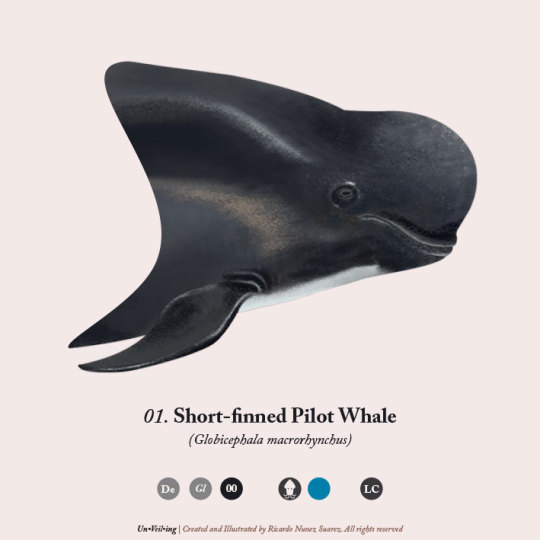
Short-finned Pilot Whale
Globicephala macrorhynchus
Family: Delphinidae
Genus: Globicephala
Subspecies: 00
Feed: Mollusks
Habitat: Coastal Waters
Status and Conservation: Least Concern
This whale is known by various names. Pilot whales were originally associated with the theory that a leader of the pod was piloting them. There is also Pothead Whale, but the Melon-Headed Whale deserves better. And, of course, there is "Blackfish," which is a term used when we are uncertain about the exact identity of various marine animals.
Wanna see the whole illustration?
Join the club here.
$3 a month.
Fin del comunicado.
#illustration#pilot whales#Short Finned Pilot Whale#Whales#dolphin#scientific illustration#drawing#illo#wild animals#animals#wildlife#artist on tumblr#mammals#extinct animals#conservation#marine wildlife#marine mammals
47 notes
·
View notes
Text
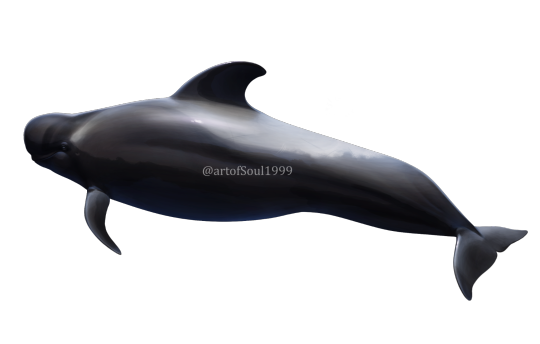
Here's a short finned pilot whale for Dolphin Awareness Month. They're a bit challenging to draw, but I still had fun making this illustration.
#pilot whale#short finned pilot whale#art#whales#dolphins#cetaceans#digital painting#krita art#illustration#animal art#artists on tumblr#digital art#marine mammals#marine life
7 notes
·
View notes
Text
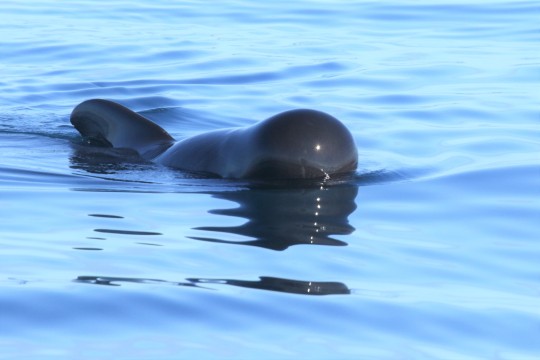
Shiho short-finned pilot whale Globicephala macrorhynchus ssp.
Observed by mariobird, CC BY-NC
Short-finned pilot whales Globicephala macrorhynchus are found worldwide in tropical and temperate waters. Recently, two subspecies were defined. The Shiho short-finned pilot whale has not yet received a formal scientific name, pending genetic sampling of historic museum specimens to see if the Shiho form can be attributed to an already-named form of pilot whale. The Shiho short-finned pilot whale is found in cool waters from Japan to California and as far south as Peru. In general, this subspecies is the larger of the two, with a plainer black coloration and an especially rounded, bulbous melon in adult males, as seen here.
#Globicephala macrorhynchus ssp.#Shiho short-finned pilot whale#Cetacea#Delphinidae#cetacean#dolphin#whale#North America#United States#California#Pacific Ocean#keep reading
16 notes
·
View notes
Text

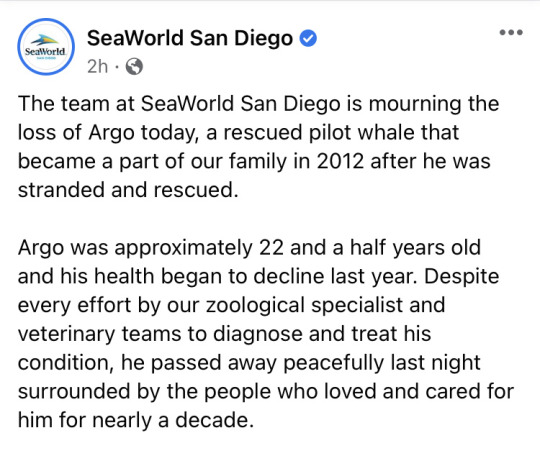
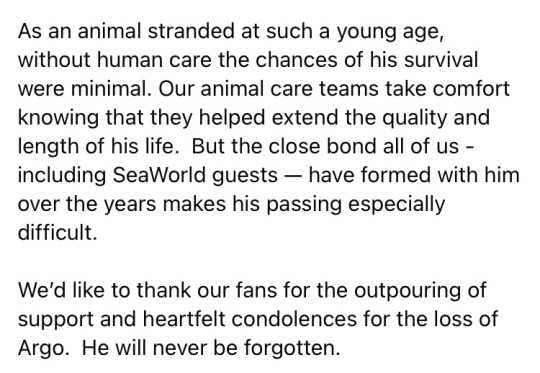
Today, SeaWorld San Diego announced the passing of their rescued short-finned pilot whale Argo. Argo, originally from Japan, stranded as a youngster in 2004 and was taken into permanent human care after several failed release attempts by the Japanese Coast Guard. In 2012, he was moved to San Diego, as his home at Japan’s Kamogawa SeaWorld (unaffiliated with the American parks) did not house any others of his species. He leaves behind an adopted pod of bottlenose dolphins and two other rescued pilot whales, Piper and Ava. Swim forever free, Argo, and my heart goes out to your human family who gave you the years you otherwise would have lost 🐳
#argo#seaworld#seaworld san diego#short-finned pilot whale#pilot whales#cetaceans#marine mammals#aquariums#animal rescue
23 notes
·
View notes
Text
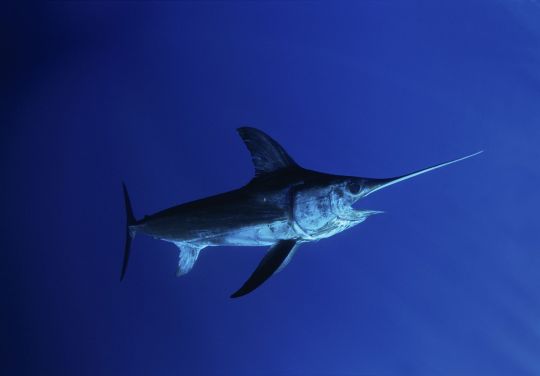


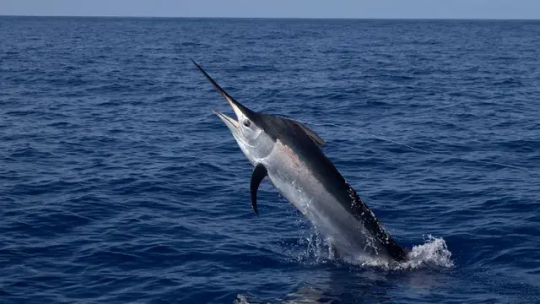
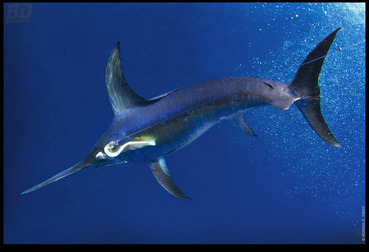
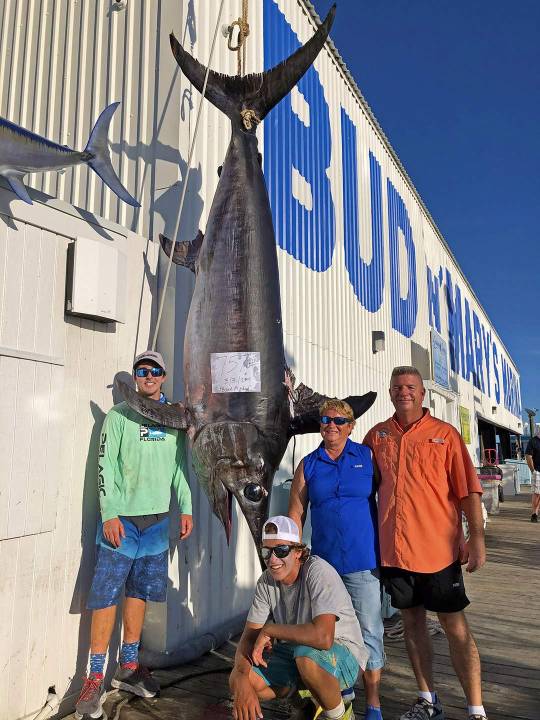


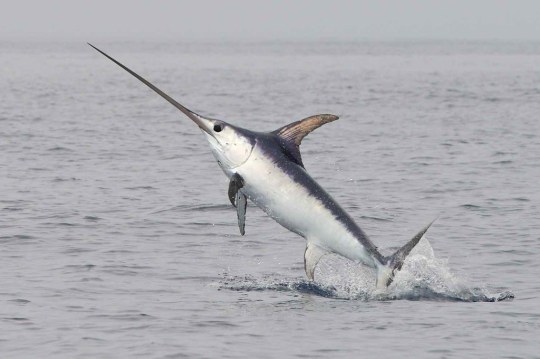
Happy Earth Day. Xiphias gladius, better known as the swordfish or the broadbill, is a species of large predatory fish, and the sole living member of there family Xiphiidae. These fish can be found throughout the atlantic, pacific, and Indian oceans from the surface to depths up to 9,442ft (2,878m). This highly migratory species typically moves towards colder regions during the summer and warmer regions during the winter, feeding upon a wide range of pelagic fish, cephalopods, and crustaceans. Swordfish are not a schooling fish and often travel alone or in loose congregations, they may cruise at some 22mph (36km/h) and rely on there speed to catch prey, reaching up to 60mph (100km/h) in short bursts. Contrary to popular legend they do not stab there prey but rather slash at it with there sword. Swordfish are themselves occasionally preyed upon by killer whales, pilot whales, shortfin mako sharks, and possibly giant squid. Reaching around 10 to 15ft (3 to 4.55m) in length and 500 to 1,500lbs (230 to 680kgs) in weight, with female swordfish are slightly larger than males, they sport elongated and rounded bodies with tall fins and a distinctive sword like bill. Swordfish first hatch with scales and teeth but end up loosing both by adulthood. The breeding season varies according to the location, typically occurring in spring and summer in temperate zones and year round in tropical climates. During spawning a single female swordfish may lay 1 to 29 million eggs. Under ideal conditions a sword fish may reach sexual maturity at 4 to 5 years of age and live up to 16.
#pleistocene pride#pleistocene#pliestocene pride#pliestocene#cenozoic#fish#swordfish#ocean#marine life#deep sea#animal#animals
8 notes
·
View notes
Text


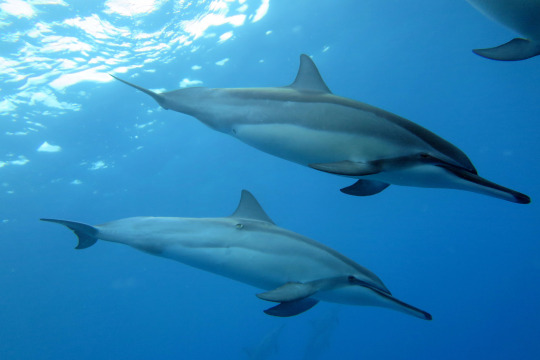

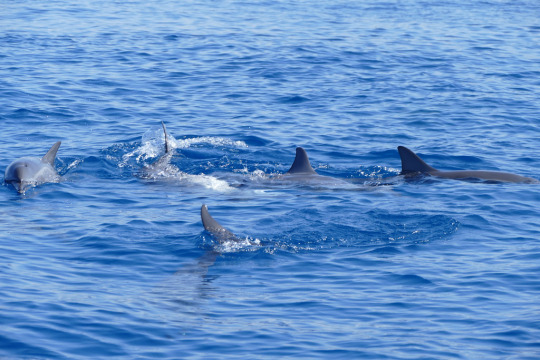
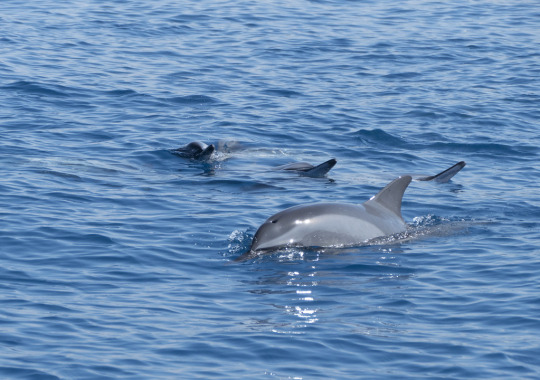

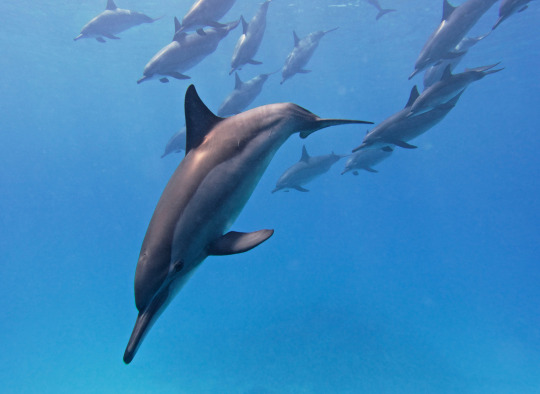

Hawaiian Spinner Dolphins (Stenella longirostris longirostris), Big Island, Hawaii.
Spinner dolphins of Hawaii are nocturnal feeders and forage in deep scattering layers, which contain many species. Off Oahu, Hawaii, spinner dolphins forage at night and cooperatively herd their prey into highly dense patches. They swim around the prey in a circle and a pair may swim through the circle to make a catch. Spinner dolphins are in turn preyed on by sharks, orcas, false killer whales, pygmy killer whales, and short-finned pilot whales.
Spinner dolphins in Hawaii receive multiple daily visits to their near-shore resting grounds, with boats taking people out daily to snorkel and interact with the local dolphin population. Such activities are increasingly coming under criticism on the grounds of possible harm to the dolphins, and efforts are being made both to educate the public in order to minimize human impact on the dolphins, and to bring in regulations to govern these activities.
15 notes
·
View notes
Note
I understand if this is not…. The Content you want on your blog, but in your readings of logs and journals/diaries of whalers, do they talk about the sheer size of the whales? Especially in comparison to the boats used to hunt them? Maybe I just haven’t been reading closely enough, but there doesn’t seem to be much about the whales themselves in whaling logs. Which maybe speaks to how few and far between whales were successfully caught? But I also know that is faulty, because of how big the whaling industry was and how much devastation was wreaked on whale populations… LOTS OF THOUGHTS so I thought I would ask Tumblr’s resident expert.
Oh this is the exact content for my blog lol, call me Ishmael! Content warnings for animal death.
Because they're whalemen, when speaking about the size of whales they always referred to them in terms of 'barrels', meaning how much oil they imagined they'd yield. Many are the laments of losing a '100 barrel whale', which would be quite a massive animal indeed, and was very rare to see (though not unheard of). I think the largest whale I've seen a log capture was 120 barrels. This sample from the back of the logbook of the bark Osceola II, 1866, shows some of the typical sizes of the whales it caught:

[id in alt]
The average size of whales taken ranged from 30-60 barrels, from sperm and right whales. And the average length of a sperm whale is 35-50ft and 13-50 tons depending on if it's female or male, and for a right whale around 45-55 ft and 45-80 tons. So the rare 100 barrel whale seen here was likely a very large bull. They'd also take calves (😢), hence the smaller numbers too.
A whaleboat was about 25-30ft long, to get a sense of scale of boat vs whale. Whaling museums like installing whale skeletons alongside whaleboats to give that perspective. Here's the exhibit in Nantucket's museum:
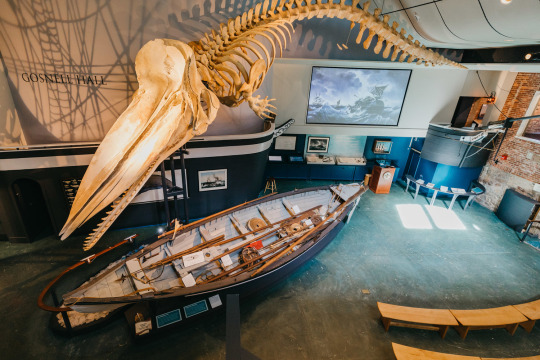
[id in alt]
And here's an example, in relation to a man, of a sperm whale's jaw:

[id in alt]
The jaw alone could be up to 25 ft long. I've stood in front of these jawbones myself and MAN it gives me the willies every time.
The drawings of whalemen also can give a sense of what it feels like to be alongside such an animal. 2nd mate Benjamin Boodry of the Arnolda, 1852, drew an image of his experience of almost having his ‘brains knocked out by a whale' the day before, named here as 'Head breaker'.

[id in alt]
He wrote-- "I do not think that whaling will agree with mine that is if they are a going to Bite as Close to me as they did yesterday this being knocked 15 feet right into the air and coming down alongside of his jaw by a whales rooting is not what it is cracked up to be."
In the 19th century, whalers tended to go after Right whales and Sperm whales and, in the latter half of that century, Bowhead whales. Right whales and bowheads were sought after because they tended to be slow moving and rather peaceable, (😢) and had a lot of blubber and baleen. Sperm whales were much more aggressive, but had much more valuable spermaceti in their head case. Those three also tended to float when killed, though that wasn't always the case. Whalers also lowered for 'blackfish' (pilot whales), but only for practice because there wasn't much oil to make the labor worth it.
Humpbacks weren't particularly popular to hunt because of their tendency to sink when killed and their baleen was too short to be of commercial value. 'Mussel diggers' or 'devil fish' (grey whales) were also not hunted often because they had a reputation of being very aggressive and also had a tendency to sink when killed. 'Sulphur bottoms' (blue whales) were avoided almost entirely, because they were Way Too Big and Way Too Fast and sank. And 'finbacks' (fin whales) as well, because they were too fast and sank. Many a logbook complained about seeing nothing but 'humpbacks, mussel diggers, sulphur bottoms, and finbacks' and often didn't bother them much. Whalers only lowered for these whales when things were particularly desperate, and they usually ended up regretting it. Here's Mr. Stetson from the bark Arab, 1855, talking about a situation when they fastened to a mystery whale that escaped. He shared his thoughts on what it may have been based on its behavior:
‘[…] he gave the whale chase, went on and got fast to him immediately without any difficulty, but as soon as the whale was struck off he started like an affrighted race horse, and although he did not sound, yet he went so fast that they could not hold on to the line at all and the whale accordingly took the whole tubfull nearly as fast as it could run out of the boat, the boat in the meantime going like a locomotive engine. The 2nd mate allowed the whale to take the line until it became very evident that he could not prevented from taking the whole of it if they held on, and accordingly just before the end was reached he cut the line saying he could save enough for a “short warp” about four fathoms.
Of all the traveling that I ever saw whales do, this I think was beaten only by the finback that we shot on Kodiak the day before leaving, and that fellow I think traveled at the extreme height of a whale’s speed. What manner of whale this was that the second mate struck was a subject of some controversy, as the transaction passed so quickly that no one hardly obtained a good sight of him: by some he was pronounced a sulphur bottom and by others a humpback, but the general opinion was that he was a sulphur bottom. Whatever species he belonged to he was certainly a racer of the first class.”
Either way, a whale is a huge animal regardless of species. It was an absolutely brutal endeavor--there was no way to kill an animal of that size quickly or cleanly. And the ones who killed it (which would often take hours) would then have to row those dozens of tons of deadweight back to the ship that was often miles off (which would also often take hours).
On a successful voyage, a ship might take 40 whales over the trip, but there were many voyages that didn't kill that many. Regardless, with hundreds of voyages every year, those numbers added up to the point that those whale populations are still in recovery today. But it can't all be attributed to 19th century whalers--there's 20th-21st century commercial whaling, boat strikes, fishing line, fracking, chemical and plastic and noise pollution, etc. that continue to harm those populations today. And there are also folks working to heal both old and continuing harm so...that's what's important.
108 notes
·
View notes
Text
Whale Tournament Masterpost!
Welcome to the whale swag bracket, a competition to determine the best species of whale! This competition will include 64 species (who have already been selected) in the infraorder Cetacea, which includes whales, dolphins, and porpoises.
All match ups were decided randomly, and I did my best to prevent any ridiculously unfair matchups. I encourage everyone to make an effort to learn about some lesser-known competitors, I’m sure you’ll find them quite interesting!
The only rules are to have fun, be nice to everyone, and don’t bot the polls please I love whales too but let’s make this fair.
The first round of polls will be split up into two groups to prevent too many polls running at once, and the first round will begin on Friday, February 17th at 12 PM EST. Links to all the polls, as well as the complete bracket, can be found here!
Bracket
Round One, Part One: CLOSED
Gray whale vs True’s beaked whale
Northern bottlenose whale vs Strap-toothed whale
Atlantic spotted dolphin vs Dall’s porpoise
Northern right whale dolphin vs Rice’s whale
White-beaked dolphin vs Cuvier’s beaked whale
Killer whale vs false killer whale
Tucuxi vs Risso’s dolphin
Sei whale vs Narwhal
Heaviside’s dolphin vs Blue whale
Dwarf sperm whale vs Harbor porpoise
Antarctic minke whale vs Hector’s dolphin
Striped dolphin vs Rough-toothed dolphin
Commerson’s dolphin vs Spectacled porpoise
Pygmy right whale vs Sato’s beaked whale
Atlantic white-sided dolphin vs Southern right whale dolphin
Hourglass dolphin vs Common dolphin
Round One, Part Two: CLOSED
Yangtze finless porpoise vs Blainville’s beaked whale
Bottlenose dolphin vs Indus river dolphin
Melon-headed whale vs Southern right whale
Omura’s whale vs Amazon river dolphin
Pygmy sperm whale vs Australian humpback dolphin
Baiji vs Vaquita
Spinner dolphin vs Bowhead whale
Pantropical spotted dolphin vs Dusky dolphin
Australian snubfin dolphin vs Bryde’s whale
Short-finned pilot whale vs Pygmy killer whale
Beluga vs Humpback whale
North Atlantic right whale vs Fin whale
Common minke whale vs Irrawaddy dolphin
Sowerby’s beaked whale vs La Plata river dolphin
Sperm whale vs Indo Pacific humpback dolphin
Baird’s beaked whale vs Pacific white-sided dolphin
Round Two: ONGOING
Gray whale vs Strap-toothed whale
Atlantic spotted dolphin vs Northern right whale dolphin
Cuvier’s beaked whale vs Killer whale
Tucuxi vs Narwhal
Blue whale vs Harbor porpoise
Antarctic minke whale vs Striped dolphin
Commerson’s dolphin vs Sato’s beaked whale
Southern right whale dolphin vs Hourglass dolphin
Yangtze finless porpoise vs Indus River dolphin
Southern right whale vs Amazon river dolphin
Pygmy sperm whale vs Vaquita
Spinner dolphin vs Dusky dolphin
Australian snubfin dolphin vs Pygmy killer whale
Beluga vs Fin whale
Irrawaddy dolphin vs La Plata river dolphin
Sperm whale vs Pacific white-sided dolphin
Round Three: CLOSED
Gray whale vs Atlantic spotted dolphin
Killer whale vs Narwhal
Blue whale vs Striped dolphin
Commerson’s dolphin vs Hourglass dolphin
Yangtze finless porpoise vs Amazon river dolphin
Vaquita vs Spinner dolphin
Australian snubfin dolphin vs Beluga
Irrawaddy dolphin vs Sperm whale
Round Four: CLOSED
Atlantic spotted dolphin vs Narwhal
Blue whale vs Hourglass dolphin
Amazon river dolphin vs Vaquita
Beluga vs Sperm whale
58 notes
·
View notes
Text
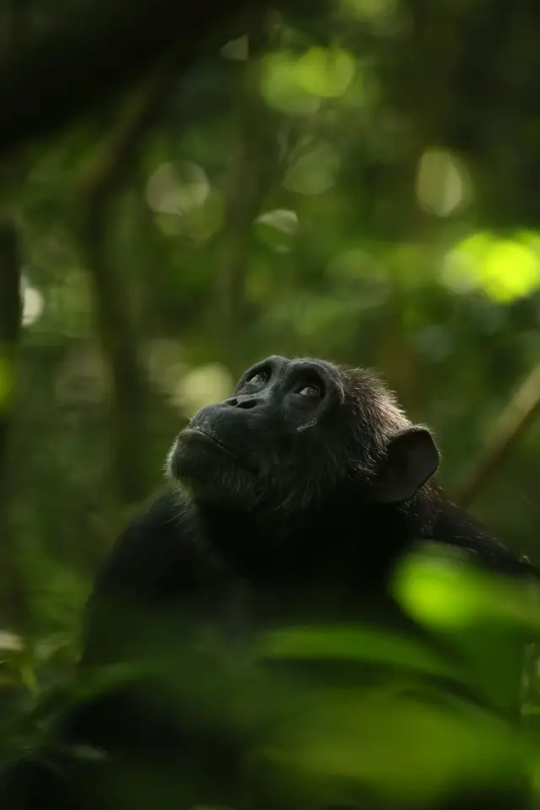
There is evidence to suggest that chimpanzees, like humans, can experience a phase similar to menopause. Menopause is a biological phenomenon in which females cease to be fertile and undergo hormonal and reproductive changes. In the case of chimpanzees, studies have observed that female chimpanzees also go through a reproductive senescence, a period of time when they cease to reproduce.
Research conducted on wild chimpanzee populations, particularly in East Africa, has shown that female chimpanzees experience a decline in fertility and reproductive success as they age. The age at which chimpanzee females experience reproductive senescence is estimated to be around the mid-30s to early 40s, which is similar to the age range at which human females typically go through menopause.
By the way, the reasons behind reproductive senescence in chimpanzees are not fully understood, but it's believed to be related to physiological changes and possibly ecological factors.
Besides humans and chimpanzees, there are a few other species of animals where females experience menopause or a similar reproductive phenomenon. Here are some examples:
Orcas (Killer Whales): Female killer whales are known to go through menopause. The reasons behind this are not entirely clear, but it is suggested that older females, post-reproductive, play a crucial role in supporting and guiding their offspring and the larger pod, contributing to the survival and reproductive success of their kin.
Short-finned Pilot Whales: Similar to killer whales, short-finned pilot whales also exhibit post-reproductive lifespans, where older females cease reproduction and contribute to the social structure and survival of the group.
Narwhals: Female narwhals have been observed to go through menopause as well. As with other species, post-reproductive females may contribute to the group's overall fitness by assisting with the care of younger members.
Beluga Whales: There is some evidence suggesting that beluga whales also experience a form of menopause. Older females may stop reproducing and play roles in supporting their social groups.
3 notes
·
View notes
Text

Long-finned Pilot Whale
Globicephala melas melas
Family: Delphinidae
Genus: Globicephala
Conservation Status: Least Concern
This whale is not a whale but a large dolphin. Despite the minimal differences between the Short-finned Pilot Whale and this species, they are indeed two distinct species. If that is not perplexing enough, this dolphin also possesses one subspecies—actually two, although one became extinct long ago along the coasts of Japan. In fact, scientists aren't sure that was a subspecies but almost sure. Let's say %93,2 sure.
You see, science is consistently regarded as an exact discipline.
Consider joining the club here.
No money? No problem. Follows, likes and shares will help too.
Hasta la vista.
#Long finned Pilot Whale#pilot whales#whales#dolphins#illustration#drawing#scientific illustration#illo#wild animals#wildlife#animals#artist on tumblr#mammals#whale#conservation#endangered species#extinction
34 notes
·
View notes
Text
Wild chimps have been shown to undergo menopause for the first time
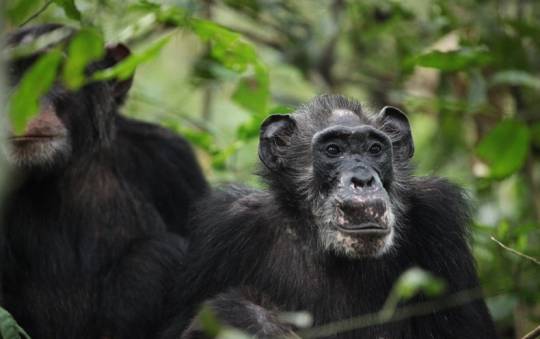
Menopause is uncommon within the animal kingdom. In mammals, menopause happens one 12 months after an individual's final pure ovulation cycle and is characterised by modifications in hormone ranges and infertility. It has been documented in only some species, together with people, orcas, and short-finned pilot whales. However new proof exhibits that some wild chimpanzees additionally expertise menopause.
Scientists spent a number of years finding out the Ngogo chimpanzee group in Uganda. They collected demographic and hormonal proof that strongly means that many older girls within the inhabitants undergo menopause—and proceed to dwell wholesome lives for a number of years afterward. Though researchers have seen indicators of menopause in some captive nonhuman primates, that is the primary time it has been documented in wild primates.
"I believe that is an extremely thrilling examine," mentioned Susan Alberts, a primatologist at Duke College, which was printed Thursday. science. "They did such a pleasant job with their evaluation."
The Ngogo chimpanzee inhabitants is exclusive for a lot of causes. The primates, which dwell inside Uganda's Kibale Nationwide Park, are extra remoted from human cities than many of the world's chimps. They're properly researched and even starred in their very own Netflix collection. And in comparison with different chimpanzee populations, Ngogo chimps dwell longer.
Leonora, a post-breeding feminine of the Ngogo group of chimpanzees in Kibale Nationwide Park, Uganda. Credit: Kevin Langergraber/Arizona State College
When Sholi Gunter began working with apes within the early 2000s, she observed this. "We had lots of previous girls," she says, "and it was uncommon."
Gunter, a biologist at McLennan Group Faculty and a co-author of the brand new examine, suspected that these older feminine chimpanzees may undergo menopause. So he and his colleagues started amassing urine samples from primates and inspecting them for hormonal modifications, similar to will increase in luteinizing hormone and reduces in estradiol, that point out menopause in people.
They discovered these modifications in a number of older girls. The researchers had been then capable of mix this dataset with demographic knowledge collected from the inhabitants over a number of years. Importantly, the info exhibit that "not solely does chimpanzee menopause happen however (additionally) when It occurs," mentioned Melissa Emery Thompson, an evolutionary anthropologist on the College of New Mexico and co-author of the examine. The outcomes present that, like people, Ngogo chimpanzees start menopause after age 50. On common, sexually mature females spend about one-fifth of their lives in a post-reproductive state—about half that of human hunter-gatherers.
Why these chimps undergo menopause is a little more difficult to elucidate. In any case, it's an evolutionary thriller why an organism would exceed its reproductive capability. A standard rationalization for menopause in people, often known as the "grandmother speculation", posits that it's evolutionarily advantageous for older girls to assist construct up the following technology.
However "it is probably not potential for chimpanzees as a result of they do not dwell with their daughters," mentioned Peter Ellison, an evolutionary anthropologist at Harvard College who was not concerned within the examine. Grownup feminine chimps have a tendency to maneuver to a unique household when it is time to have their infants, they usually have a tendency to lift them communally, that means primates don't have any genetic incentive to have their very own grandchildren.
As a substitute the analysis means that menopause might solely be a characteristic of the mammalian reproductive system if such animals are long-lived. "It could be one thing that was shared by the final frequent ancestor of people and chimpanzees," Gunter mentioned. And maybe due to their isolation from human-induced stress, Ngogo chimps dwell longer.
For some specialists, this was a stunning discovery. "If you happen to had advised me about these outcomes earlier than I learn the paper, I'd have been skeptical," Alberts mentioned. Not all chimpanzees appear to undergo menopause—however that could possibly be the results of elements aside from biology. In most chimpanzee populations exterior of the Ngogo group, grownup females sometimes dwell to age 30 as a consequence of predation, illness, or stress. Alberts says the brand new paper's findings are so robust that he cannot argue with them. The following step, he provides, will probably be related long-term research of further wild chimpanzee populations to find out whether or not Ngogo chimpanzees are distinctive in surviving previous their reproductive years.
Ellison wish to see related research of different social mammal species, similar to elephants and woolly spider monkeys. The findings might assist us develop a greater understanding of how menopause advanced, in addition to why—and why—it stays so uncommon.
#Wild #chimps #proven #bear #menopause #time
Read the full article
4 notes
·
View notes
Text

Orcas are very affectionate creatures and display the similar personalities and levels of affection as humans or chimpanzees! (This was found through a research published the Journal of Comparative Psychology.) Some speculate the personality traits of playful, stubbornness, sensitivity, and protectiveness may come from the fact that orca pods are very close, and these are needed to form complex social interactions. Orca pods have also been known to cuddle in what is formally known as a cuddle puddle! It is also speculated that orcas can feel complex emotions that isn’t observed in most animals such as grief for their lost ones.
Overall orcas are very sociable affectionate creatures when it comes to their pod. This could be because the pod is their family, as younger orcas stay with their mothers for life even after having children of their own. Even elder female orcas, or grandma orcas, stay with their pod to train and watch over young ones. Orcas are also one of the animals to live decades past menopause, (the other animals being humans and short-finned pilot whales) this is an evolutionary benefit that comes so orcas can make sure their next of kin stay alive and have all the hunting skills they need to keep their own pod alive one day.
Orcas have a sweet and beautiful love for their pod, doing anything and everything to keep them alive! While I don’t usually insert my own opinions I think it’s adorable, and I think we should use the term cuddle puddle more often! :3
#orca#orcas#whales#marine life#ghosteorca facts#sealife#killer whale#I LOVE THE TERM CUDDLE PUDDLE SM
8 notes
·
View notes
Text
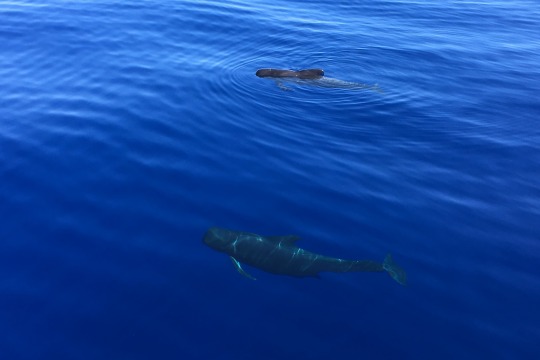
Naisa short-finned pilot whale Globicephala macrorhynchus macrorhynchus
Observed by alexlamoureaux, CC BY-NC
#Globicephala macrorhynchus macrorhynchus#Naisa short-finned pilot whale#Cetacea#Delphinidae#cetacean#whale#dolphin#North America#United States#Florida#Atlantic Ocean
13 notes
·
View notes
Text
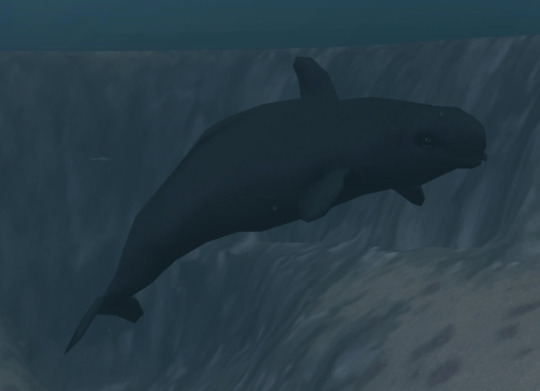
[ID: An image of a short-finned pilot whale from Zoo Tycoon 2. End ID.]
Short-finned pilot whale from Zoo Tycoon 2 (2004)
10 notes
·
View notes
Text
Menopause Could Explain Human Evolutionand Lead to a New Role for Women
Menopause Could Explain Human Evolution—and Lead to a New Role for Women
https://theheartysoul.com/menopause-could-explain-human-evolution/
Here’s a riddle for you: what do human females have in common with killer whales, beluga whales, narwhals, and short-finned pilot whales? We all live for decades after our reproductive years end [1]. Menopause, defined as the end of the reproductive years, or, when a woman stops having her period and thus stops being fertile, happens […]
The post Menopause Could Explain Human Evolution—and Lead to a New Role for Women appeared first on The Hearty Soul.
via The Hearty Soul https://theheartysoul.com/
March 27, 2024 at 09:22AM
0 notes